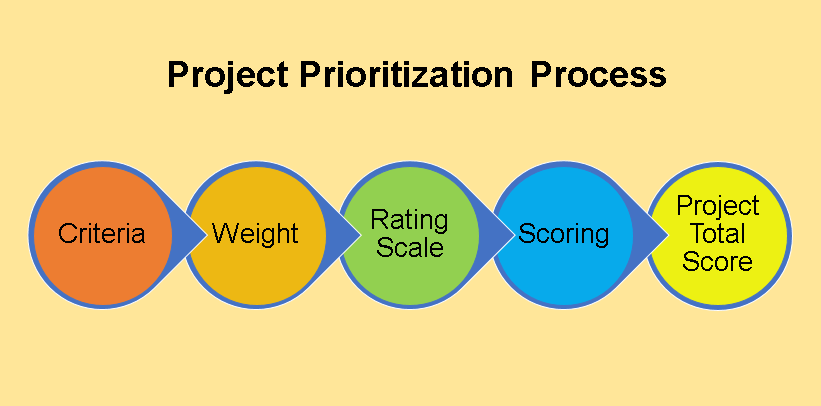Overview
IT Project Prioritization provides PCC a framework and process for selecting new projects which best support the campus’ strategic interests and directions and provide it the most value. The intended results of the Project Prioritization process are to:
- Build consensus on the most important information technology projects
- Assure project alignment with PCC strategic objectives for IT project prioritization
- Add transparency to the prioritization of IT projects
- Increase collaboration across the university
- Improve the smooth flow of work for IT staff
It also helps mitigate other challenges, such as:
- Ad hoc requests that lack proper authorization, sponsorship, resource commitments, and funding.
- “First come, first served” mindset
- Staff spread thin among many competing projects
- “Everything is a priority” which results in not delivering all requested projects on time.
Framework
Projects are measured against the campus objectives and its capabilities to undertake projects. The project prioritization process includes:
- Project scoring – An overall weighted score is generated that represents the project’s value to the campus. The higher the score, the more value. All projects are accepted.
- Funding availability –identify available funds to carry out the project, and location of those funds
- Resource capacity evaluation – Identify which IT and/or other department staff resources are available to work on the project.
- Project scheduling – A project is scheduled based on its scoring, including funding, and resource capacity. A high scoring project may not be able to start immediately if resources and/or funding are not available; in turn, lower scoring projects with available resources may start ahead of a higher scoring project. Projects with a future start date can be scheduled based on the future availability of resources and funding.
As a general rule, projects in motion will not be stopped and re-started just because their relative priority has changed; however, the Chief Information Officer retains responsibility for overall project portfolio management. From time to time, this will require adjustment of project activities based on the best interests of the institution. Some examples of reasons to halt a project include:
- Organizational hardship (no money)
- Project is destined to fail
- Business case no longer applies
- Overruns are extreme (budget and time)
New Projects
The first thing to do to get the process started is to fill out the IT Scoring Rubric Information form. The form is simple and all you need to do is put a check box near the closest answer to each question. Once completed submit the form via email to support@piedmontcc.edu.
The proposed project is then assigned a score and placed on the project list in the appropriate order. Once the project is assigned a score Information Technology will work with you to start scoping the project using the IT Project Scoping Form.
..
Existing Project List
The the button below to view the IT Project List and the status of each project.
Contact
Information Technology
336-322-2300
support@piedmontcc.edu
Regular Hours
Monday through Thursday
8am to 5pm
Friday
8am to 4pm
Maintenance Windows:
Th 12a – 1a
Su 3a – 10a

